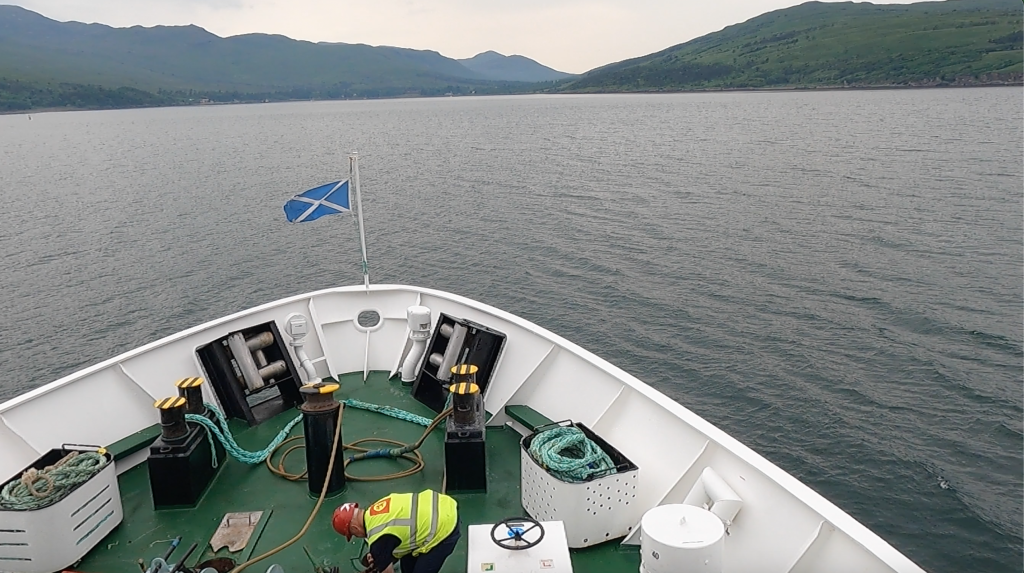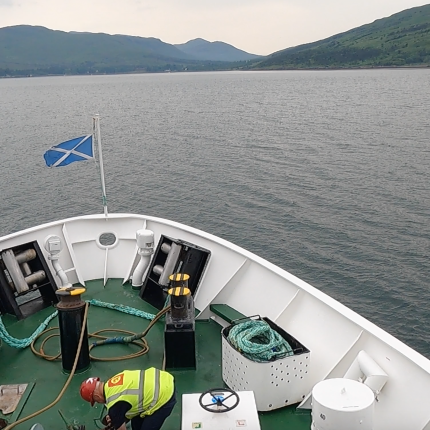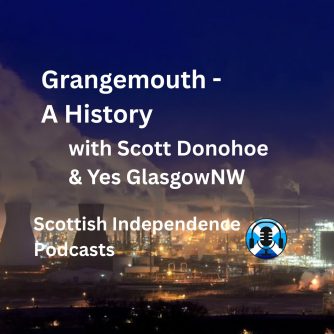Context is Everything
CalMac being the best ferry service in the world is not a headline seen in Scotland, or heard in Westminster, or even heard in Holyrood. Can it be true?
Before anyone ventures an opinion, an informed opinion, they should do a bit of research into issues such as safety, performance, age of vessels… Fortunately for us John Robertson, who runs the TalkingUpScotland blog has done just that in his blog post Factcheck – CalMac probably best comparable ferry service in world.

Here are John’s conclusions in his own words:
Since a Mull councillor shouted that CalMac was the ‘worst ferry service in the world’, unchallenged on BBC Scotland, a few months ago, I’ve been scouring for evidence.
I’ve done this because as a recovering sociologist, media feeding frenzies like the one we’ve seen on Scotland’s ferries make me twitch. I think, hang on, maybe there’s a yawning chasm emerging here, between the world of panic being constructed and the facts on the ground and that I should be looking into that chasm.
What do I mean by the facts on the ground?
Well, importantly compared with other comparable ferry services, how well does CalMac do on these key criteria:
- Passenger and staff safety.
- Service in terms of number of vessels, ports and, of course, smaller vulnerable communities.
- Cost in terms of affordability and generosity of government subsidy.
- Reliability in terms of the percentage of sailings on time.
- Investment in terms of age of vessels
CalMac’s performance on these criteria is fully transparent, like that of Scotland’s health, crime and education statistics. Regrettably, few other ferry services are under such scrutiny so the following comparisons will be at times difficult. Of course, a ferry service fully open to scrutiny is by definition better than one where facts are hidden.
Comparable?
CalMac operates 34 vessels to over 50 ports and harbours including 22 islands. There are, just on that basis, comparable services in Indonesia, Bangladesh, New Zealand, Australia, Greece, Norway, Washington State and British Columbia. There may be others.
I’m going to quickly take out Indonesia and Bangladesh on the first criterion, safety, as they regularly see the sinking of overcrowded vessels with multiple loss of life. I’ll take Greece out too in the wake of the recent incident where a later-arriving passenger was pushed to his death by the crew. Regular reports of overcrowded and unsanitary vessels would also disqualify Greece.
I have to take Norway and New Zealand out as the unavailability of subsidy figures makes it impossible to compare cost in terms of affordability. That both are fully independent and Norway is massively rich would also make comparisons with Scotland problematic. Australia can be quickly eliminated on cost as the government subsidy of only £3.86 per journey is dwarfed by that of Scotland at £29.80 per journey.
Washington State Ferries and British Columbia Ferries offer useful comparison with Scotland.
- Washington State Ferries operates 21 vessels to 20 locations
- British Columbia Ferries operates 41 vessels to 47 locations.
- Both services are managed by agencies responsible to and funded by devolved governments, as is the case in Scotland.
- Both, however, have the advantage of operating in the more affluent areas around Seattle and Vancouver and in warmer, less stormy seas on the Pacific west coast.
So, back to the criteria.
Safety
All three, WSF, BC Ferries and CalMac, are safe.
Subsidy
The Scottish Government subsidy to make prices affordable to all, at £29.80 per journey is nearly twice that of British Columbia at £16,36.
For Washington State Ferrie, subsidy data per journey is not available but a 15 minute crossing from Vashon Island to Seattle costs $27 or £22 while a comparable crossing from Largs to Cumbrae is £13.90.
Reliability
Reliability comparisons with other ferry operators are difficult as only CalMac has to do daily figures. CalMac is currently averaging 95.4% on time.
Washington State Ferry’s reliability is, according to reports, ‘the worst ever’ and British Columbia Ferries is having an ‘unmitigated disaster.’
Washington State Ferries currently have 6 out of 21 ferries in docks and BC Ferries has 4 in dock. CalMac has, I think, only 2 in dock.
Investment
Finally on investment in new ferries, the average age of a CalMac ferry is 23, for British Columbia Ferries it’s 36. For Washington State Ferries, the average age is not published but 11 of the 21 are over 40 years old. Only 1 of CalMac’s 34 vessels is that age.
And a final fact: The governments of Washington State and British Columbia are never blamed in the media for anything to do with ferries.
Sources:
Ernst and Young https://www.transport.gov.scot/publication/strategic-framework-of-options-for-the-chfs-network-project-neptune/benchmarking/
https://en.wikipedia.org/wiki/Washington_State_Ferries
Thank you , John, for talking up Scotland!

One of our most popular podcasts is “Aye – But Ferries” where we talked to three activists in Orkney. One of them, Alf Baird, is a retired Professor of Maritime Business and Director of the Maritime Transport Research Group at Edinburgh Napier University. We had a really good discussion with them and they had some criticisms of Calmac and some suggestions of how to improve our Scottish ferry services. You can watch that podcast here:
The Radio4 programme “More or Less” routinely looks at where mistakes are made, either deliberately or not, in how statistics and figures are presented by the media. Last week they had a look at how CalMac calculates its reliability figures. You can listen in here from 20min into the programme: More or Less: Scotland’s Ferry Woes






